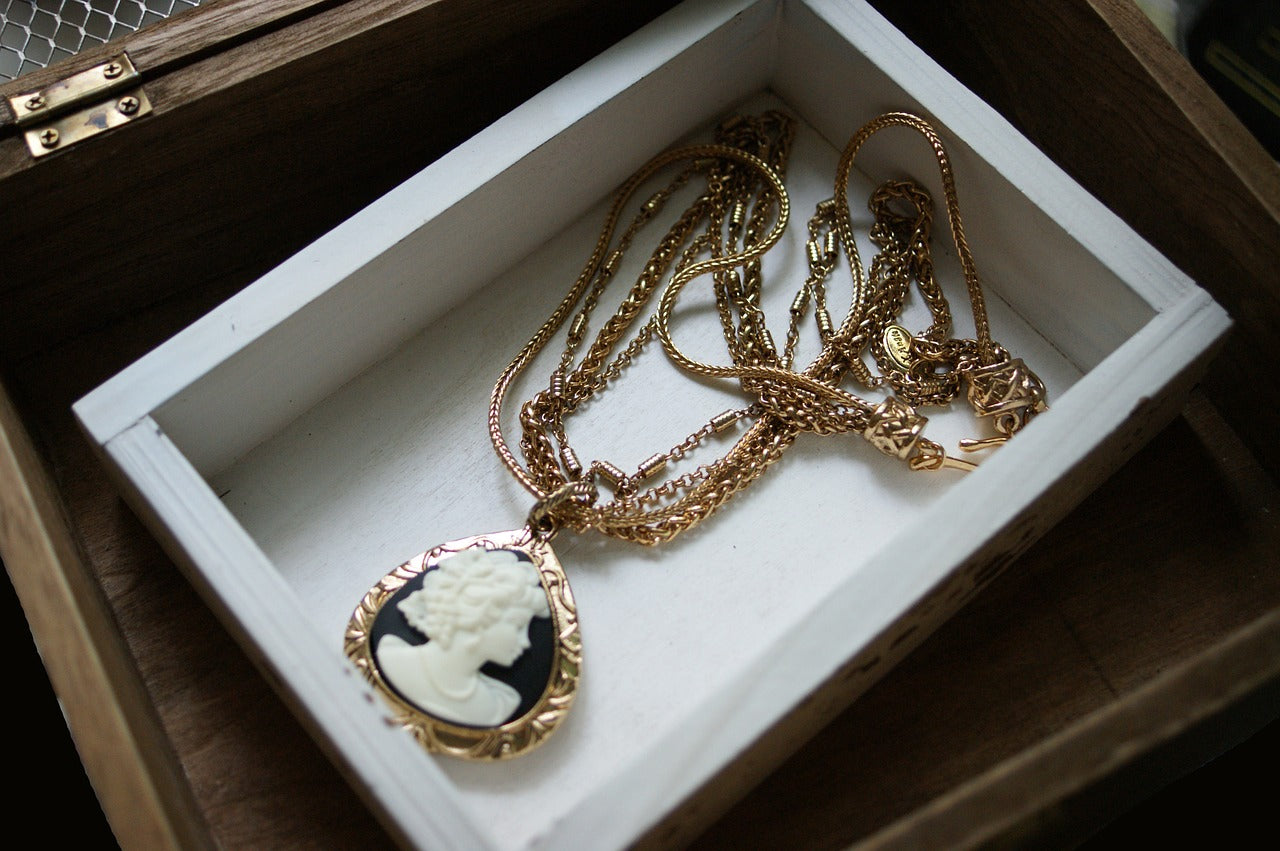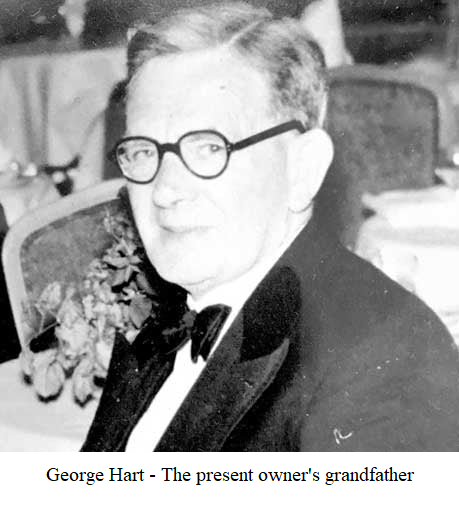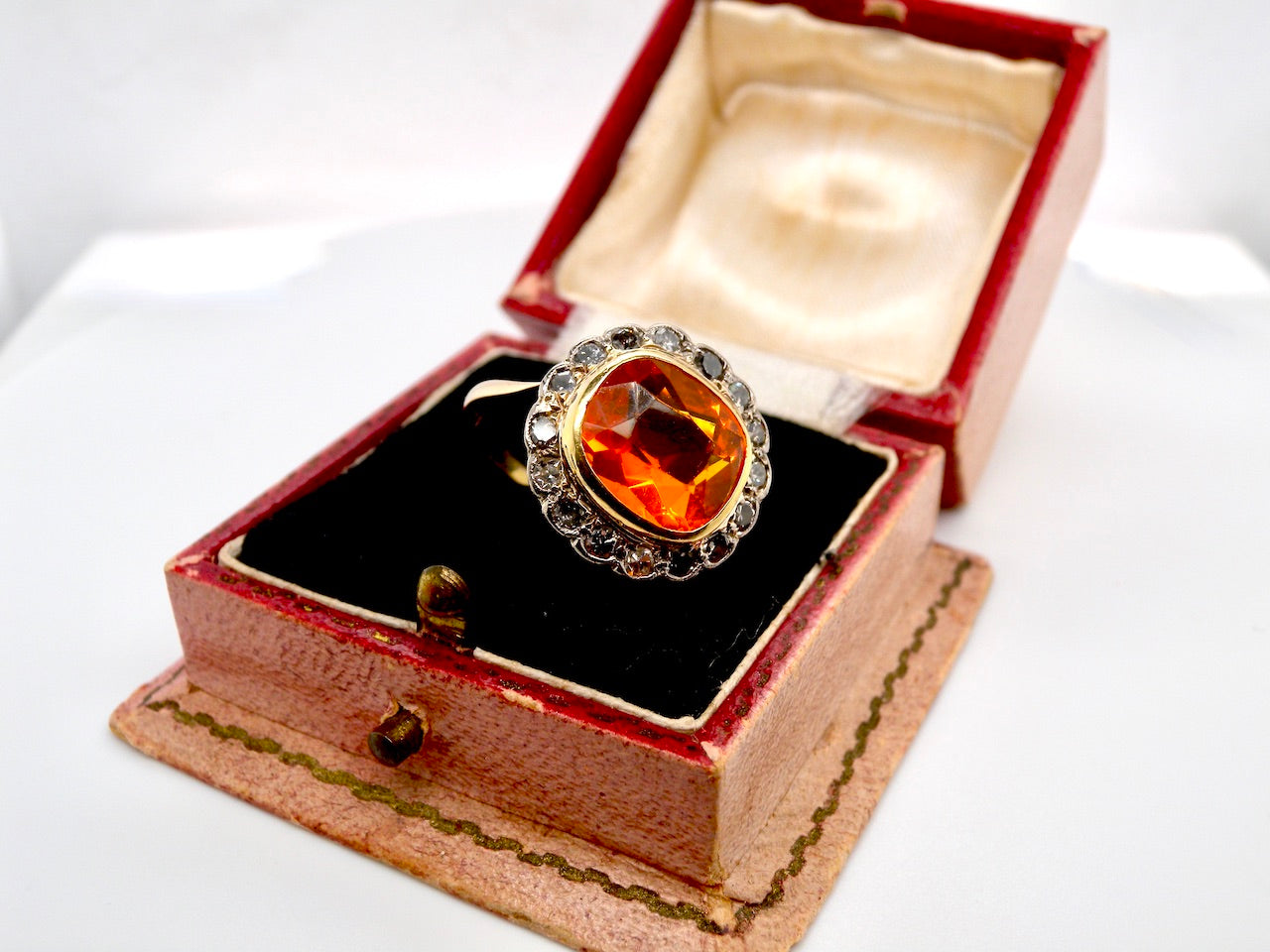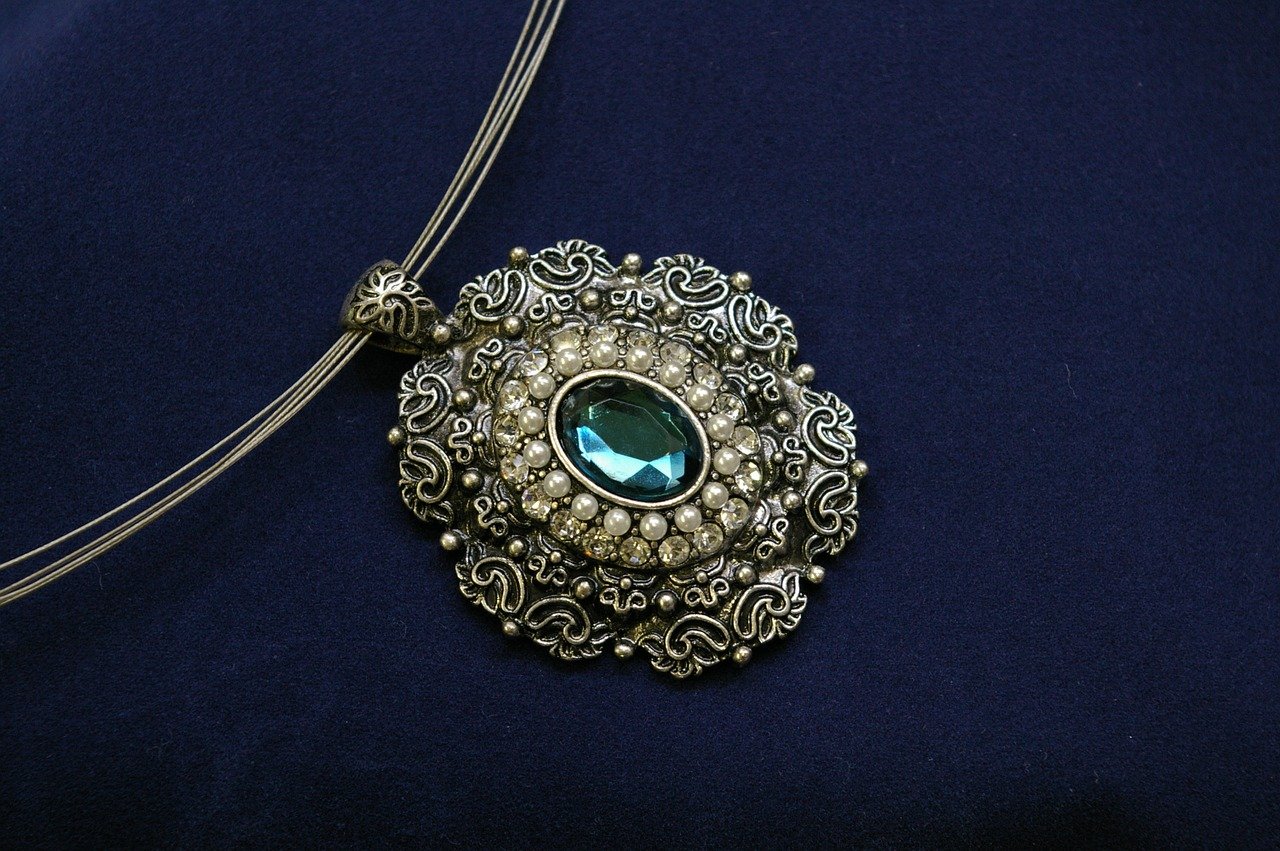Antique jewellery is known for its stunning and stylish appearance and original gemstones, but have you ever looked at these precious stones from an investment point of view?

Most people buy antique jewellery because they love it and want to connect with the memories it holds. However, if effectively utilized, you can easily turn your love for this piece of history into an investment that will generate good returns in the long run.
This kind of investment may sound as simple as buying your favourite vintage pieces and later selling them at a profit. However, there is more into it than just mere buying and selling these rare designs. This antique and vintage jewellery investment guide will give you all the details about antique jewels and precious metals and whether it as a good investment for you.
Buying Antique Jewellery Online
Over the past few years, many businesses, and individuals have ventured into the online sale of antique jewellery. Owing to the increased demand for their intricate designs this ancient jewellery, some unscrupulous business people are engaging in the production of counterfeit pieces. The counterfeit pieces are produced and branded in a way that they resemble the original antique work. Due to this, many online buyers have fallen victims of such substandard jewellery being sold as antique pieces. Using a certified jeweller is therefore paramount to finding your next great investment.
If you are thinking of investing in antique jewellery by getting your pieces online, here are a few things that you should consider during the purchase.
Investigate the Online Seller
The online market is flooded with thousands of antique jewellery sellers, making it hard to tell the genuine ones from the fake ones. However, certain tips can be helpful here. For example, you can look at the number of the same antique piece available. Most antique pieces are rare or one-of-a-kind, and they can, therefore, not be available in bulk. If you find that a seller has stocked tens of pieces of particular antique jewellery, then that raises a question of doubt.
Again, you can also look at the reviews given by other buyers. The reviews will guide you in ascertaining how satisfied the buyers were with the seller’s antique pieces.
Ask Questions
If, through your investigations, you seem content with the seller, then you should ask them questions regarding the item. You can ask them where they found the piece or how it came into their possession. It is important to note that most people get antique jewellery from antique hunting, estate sales or inheritance. Some sellers will go the extra mile of telling you the exact date, location, and condition in which they acquired the piece.
Estate Jewellery
Estate jewellery refers to previously owned jewellery that is typically sold or inherited. These pieces have often been worn and may have a history or sentimental value attached to them. Estate jewellery can encompass a wide range of styles, periods, and materials, making it a treasure trove for collectors and those seeking unique and vintage pieces. It can include antique jewellery, vintage pieces from the Georgian period to mid-20th century, or even more recent, gently used jewellery. The allure of estate jewellery lies in its historical and often one-of-a-kind nature, offering both a glimpse into the past and a chance to adorn oneself with timeless beauty.
Look for Any Marks
Depending on the sellers’ feedback on a specific piece of jewellery is not enough to guarantee that it is genuine. You should take your precious time and look for any marks on it. Since most antique pieces were made about 100 years ago, the makers then left some icons or initials on their pieces of jewellery.

There are a number of websites where you can find details on marks and icons on ancient pieces that denote their origin, maker and even time of making. This research is one of the most exciting parts of buying antique jewellery you get to know more about the ancient piece.
Check for Patina
Most old age jewellery will always have some form of dents, tarnish or not all shiny appearance. This appearance is due to the fact that they have been used for many years. However, some dealers may restore a particular piece of antique jewellery to enhance its look though most of them prefer to sell it in as-is condition. The as-is condition prevents the damage of the original material, be it silver or gold, during restoration.

Online dealers or sellers use the word patina to refer to the sheen that is left behind after years of use. If an antique piece seems brand new and there are no signs of restoration, then it may be a fake piece.
Pricing Antique Jewellery
Pricing antique jewellery in the UK is both an art and a science, demanding a combination of historical knowledge, market awareness, and a discerning eye for craftsmanship. Antique jewellery encompasses a wide range of styles, periods, and materials, making it a complex task to accurately determine its value. Here are key factors to consider when pricing antique jewellery:
- Age and Historical Significance: The age of the piece is often a primary determinant of its value. Jewellery from specific historical periods, such as the Victorian, Art Deco, or Georgian eras, can command higher prices due to their historical significance and rarity.
- Materials and Gemstones: The materials used in antique jewellery can significantly affect its value. Pieces made from precious metals like gold or platinum tend to be more valuable than those made from base metals. Additionally, the type, quality, and rarity of gemstones can greatly impact pricing.
- Craftsmanship and Design: The quality of craftsmanship and the intricacy of the design can also play a crucial role in pricing. Handcrafted pieces with intricate details or unique designs are often more valuable than mass-produced jewellery.
- Condition: The condition of the antique jewellery is essential. Pieces that have been well-maintained, with minimal wear and tear, will generally command higher prices. Any signs of damage or repairs can reduce the value
- Provenance: The history and provenance of a piece can add to its allure and value. If a particular piece has a notable history or has been owned by a famous individual, it may be more valuable to collectors.
- Market Trends and Demand: The antique jewellery market is subject to trends and fluctuations in demand. Certain styles or eras may become more popular over time, influencing prices. Keeping an eye on current market trends can be beneficial when pricing antique jewellery.
- Authentication: It's crucial to ensure the authenticity of antique jewellery. Consult with experts or appraisers who specialize in antique jewellery to verify its origin and history. Authenticity greatly affects the value of a piece.
- Comparable Sales: Research recent sales of similar antique jewellery items to get a sense of the current market value. Auction houses, antique dealers, and online platforms can provide valuable pricing insights.
- Documentation and Appraisal: Having proper documentation and an appraisal from a reputable expert can provide a solid foundation for pricing antique jewellery, especially if you intend to sell or insure the piece.
Pricing antique jewellery in the UK is a multifaceted process that demands a deep understanding of history, materials, craftsmanship, and market dynamics. It's a task best approached with patience and the guidance of knowledgeable experts to ensure a fair and accurate assessment of value.
Selling Antique Jewellery
Selling antique jewellery can be a rewarding endeavor, allowing you to pass on treasured pieces to new owners while potentially realizing a financial gain. However, this process requires careful consideration and planning. Here are some key steps to keep in mind when selling antique jewellery:
- Appraisal: Begin by obtaining a professional appraisal of your antique jewellery. An experienced appraiser can determine its authenticity, assess its condition, and provide an estimated value. This appraisal is essential for setting a reasonable selling price.
- Research: Conduct thorough research to understand the market for antique jewellery. Identify potential buyers, such as antique dealers, collectors, or online platforms. Familiarize yourself with current pricing trends and comparable sales to establish a competitive asking price.
- Presentation: Properly present your antique jewellery for sale. Clean and restore the pieces if necessary, but be careful not to over-polish and damage the patina, which can be valued in some antique pieces. High-quality photographs and detailed descriptions are crucial for online listings.
- Choose the Right Sales Channel: Decide where and how you want to sell your antique jewellery. Options include online marketplaces like eBay or specialized antique jewellery websites, consignment shops, auctions, or working with antique dealers. Each has its advantages and considerations.
- Timing: Be mindful of the timing when selling antique jewellery. Some pieces may be more in demand during specific seasons or around certain events, such as weddings or holidays.
- Documentation: Maintain detailed records of your antique jewellery, including appraisals, provenance, and any historical information. Buyers often appreciate this documentation, as it adds credibility to the piece.
- Negotiation: Be prepared for negotiation. Buyers may want to haggle over the price. Be open to reasonable offers, but also know your bottom line and be prepared to walk away if necessary.
- Shipping and Insurance: If selling online, ensure secure packaging and consider insuring the shipment. Antique jewellery can be valuable, and you want to protect it during transit.
- Legal Considerations: Familiarize yourself with any legal regulations related to selling antique jewellery, especially if the pieces contain rare or protected materials like ivory or certain gemstones.
- Safety: If meeting potential buyers in person, prioritize safety. Arrange meetings in public places and consider bringing someone with you. Avoid sharing personal information unnecessarily.
- Payment: Determine the payment method that works best for you and the buyer. Secure options like bank transfers or online payment platforms are often preferred for higher-value transactions.
The Condition of the Jewellery
Less worn jewellery sells faster and at a fair price because it is less damaged or worn-out compared to the frequently worn pieces. You may also consider restoring the damaged jewellery though few buyers go for restored pieces.
Cleanliness
If the antique jewellery is dirty, you may consider having it cleaned. Take the jewellery to a professional jeweller if you are not sure of the cleaning procedure to use. Clean jewellery looks more appealing and has a high likelihood of attracting many buyers. Having improved the condition and appearance of your antique, the next step is determining where to sell it. The available options are;
Selling at a Jewellery Shop
Most jewellery shops will purchase your piece if it is in a presentable condition. Additionally, if it is a branded piece, it is likely to fetch a higher price. There are other websites that you sell your antique jewellery for a commission.
Selling Online
You can list your antique jewellery for sale at an online store or an auction site like Ebay. Include as many pictures of your jewellery as you can. Also, be sure to compare the price you list with that of similar products in other sites to make your price as competitive as possible.
Sell It as Parts
If it is hard to find a buyer for your jewellery in its wearable condition, you may consider selling it as parts. You may sell it as a scalp. This option mainly applies to damaged and worn out pieces.
Pawnshop
Most pawnshops test your jewellery to ensure that its material is genuine, and they buy it at a slightly lower price. They later resell it to make a profit.
Selling antique jewellery can be a fulfilling experience when done thoughtfully and with attention to detail. By following these steps, you can navigate the process successfully and find new homes for these cherished pieces while ensuring a fair and satisfying transaction for both you and the buyer.
Gold Antique Jewellery
Gold is a special and rare metal. It is highly ductile, malleable and also resistant to chemical reactions. Being ductile and malleable, it can be moulded into different shapes which makes it a perfect fit for jewellery. It can be used to produce aesthetically pleasing pieces of jewellery on its own and can also be combined with other materials such as copper and silver to make the pieces more wearable.
Combining gold jewellery with other materials makes it more lasting and reduces wear and tear. Jewellery that is made of gold are considered valuable and are often available at a considerably high price compared to those made from other materials. The demand for antique gold jewellery continues to rise as the value of gold rises in today’s world, and this makes it a viable investment option. You can buy antique gold jewellery from jewellery shops, pawnshops and online stores.
Purity of Gold
The purity of gold is a critical factor in determining its value and quality. Gold is typically measured in karats (K), with 24K gold being considered pure or 100% gold. However, most gold jewelry is not made from pure gold due to its softness and malleability. Commonly used karat values for jewelry include 18K (75% gold), 14K (58% gold), and 10K (41.7% gold). The higher the karat, the purer the gold, which often translates to a brighter yellow color and higher intrinsic value. Understanding the karat of gold in jewelry is essential for both buyers and sellers, as it impacts not only the appearance but also the overall worth of the piece.
Silver Antique Jewellery
Silver is a harder metal compared to gold. It ranks second after gold in terms of ductility and malleability. It’s ability to resist oxidation as well as its white metallic element, makes it a perfect choice for jewellery pieces. It can be combined with gold and other metals to improve its appearance as well as maintain its desired shape. Pieces of silver jewellery are also considered stylish and precious. Their market value is also high but slightly lower than that of gold pieces. Silver antique jewellery is also worth the investment.
Is Antique Jewellery Expensive?
Not all pieces of antique jewellery are expensive. The price range depends on the material, type, maker or brand as well as the existing condition. If you have a designer branded antique jewellery piece, such as by Arpels, Kutchinsky and Van Cleef, they are likely to be more expensive compared to pieces from unknown makers.
What is the Difference Between Buying Vintage and Antique Jewellery?
Vintage jewellery is jewellery that is 20 years or older. On the other hand, antique jewellery refers to pieces of jewellery that are over 100 years old.
Most people wear vintage jewellery to elevate fashion and style. Antique jewellery, on the other hand, holds strong historical meaning, fragile and too valuable to be worn.
If you decide to invest in antique jewellery, you should keep it in mind that the returns are not instant. It is not an investment option for the less patient individuals. Good returns come in the long run much like the stock market.
Changes in fashion trends affect the market prices of antique jewellery. In one season, the demand for antique gold jewellery may be high, and it may be low in the next season. Therefore, if you want to benefit more from investing in antique jewellery, you should keep up with the market trends in the fashion as well as tangible assets (gold and silver) stock industry. Buying across different periods like Art Nouveau, Victorian ear or retro periods can be beneficial.
Is an antique jewellery investment a good idea?
Investing in antique jewellery can be a good idea for individuals who have a passion for both history and adornment. While antique jewellery can appreciate in value over time, it's important to note that it's not a guaranteed or highly liquid investment like stocks or bonds. The value of antique jewellery can fluctuate based on various factors, including market trends, the rarity of the piece, and its historical significance. Therefore, it's crucial to approach antique jewellery as a niche and potentially long-term investment rather than a primary means of financial growth. Additionally, it's advisable to seek expert guidance and conduct thorough research before making any significant purchases in this category. Ultimately, the decision to invest in antique jewellery should align with one's personal interests and financial goals.
In Conclusion
Just like any other business investment, this kind of investment does not work in favour of every investor. Some investors will gain, while others will lose from it. Therefore, the answer to the question of whether antique jewellery is a good investment depends on your view as an investor.
You May Also Like: Investing In Precious Metals Or Cryptocurrency Which Is Best



